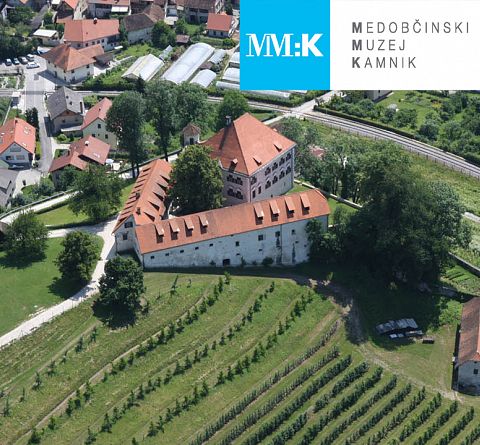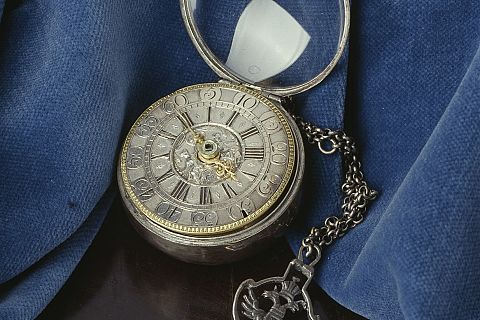Johann Georg Glässl, pocket watch, around 1720
Johann Georg Glässl, pocket watch, thin and engraved silver sheet, silver plated dial, around 1720
Watchmaking craft has a long tradition in Slovenia and with the help of written sources we can follow it from the beginning of the 16th century. Originally, watchmakers were foreigners who came to us from German countries and applied for bourgeois rights and the execution of watchmaking.
The 18th century is one of the most important periods in the design of tower, house and pocket watch and their use. Among the houses clocks they dominated in the form of a tabernacle and high-end clock with a long pendulum. Many times, however, they were built into statues.
The first pocket watch has already been reported in the 15th century. Similar were small doses with a horizontal dial at the top, which was only protected in the 17th century by transparent crystal lids and glass lenses in the 18th century. From the very beginning, pocket watches were worn on a chain, and later in a leather pocket for a belt. It was not until the 19th century that the pocket watches really moved into the pocket of a men’s suit, while Ladies wore watches around the waist. To the turn of the 19th century the wristwatch came into fashion.
Around the year 1720, a pocket watch of the shell was made by the Graz-Ljubljana watchmaker Johann Georg Glässl. Glässl, as it was at those times, was obliged to acquire auxiliary knowledge and experience from various watchmakers. He came also to Ljubljana in married here with a daughter of a watchmaker Kessler. His work in Ljubljana is documented with a silver pocket watch, the only known of this kind in our territory. Due to its thickness, we could say “inflated” shapes characteristic of the Baroque period, these watches and the like were called shells. Inside it, with engraved signature Joh. Georg Gläßl Laybach is a showcase of the baroque ornamentation, which was carried by a skillful watchman by engraving and cizeling with graphic designs.




